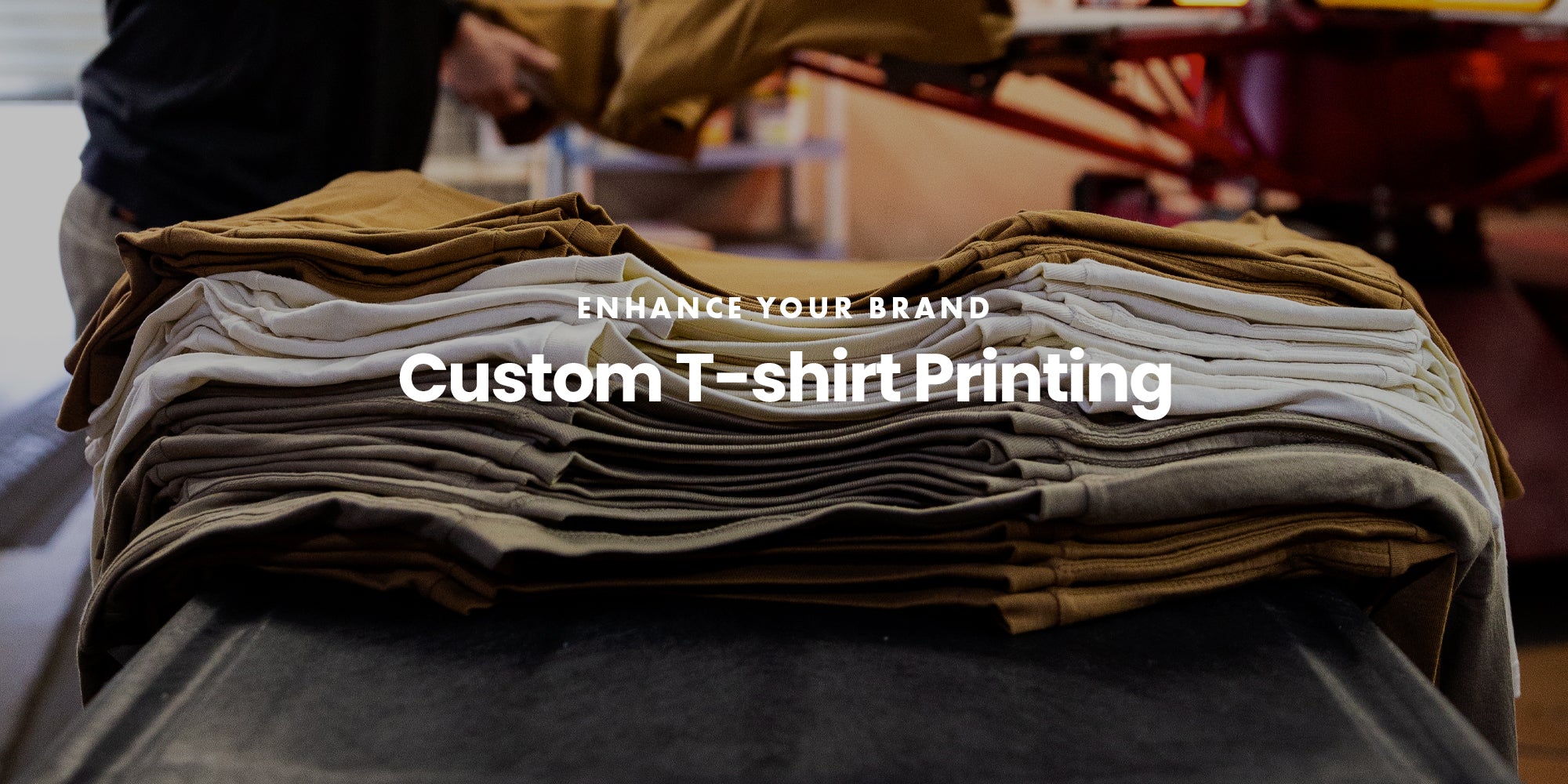Display Printing Uncovered: Whatever You Required to Understand About T-Shirt and Garment Printing Methods
Display printing is an interesting approach that integrates art with technique, supplying limitless opportunities for creative thinking. All set to explore the necessary elements that make screen publishing an art kind?
The Basics of Screen Printing: How It Works
When you dive right into screen printing, you'll discover it's both an art and a scientific research. At its core, display printing involves creating a stencil, or display, that allows ink to go through only in specific areas (screen printing kit). You begin by picking your design and preparing your display with a light-sensitive emulsion. When you subject this emulsion to light, it sets, leaving your layout as an unfavorable space.
Position the screen over the material, after that utilize a squeegee to press ink through the screen onto the garment. Each action is necessary, and understanding them will certainly elevate your screen printing skills, transforming simple garments into distinct, meaningful items.
Kinds Of Screen Printing Methods
As soon as you realize the basics of display printing, it's time to check out the different strategies that can elevate your layouts. One popular technique is traditional screen printing, where ink is pressed via a stenciled screen.
If you're going for great details, take into consideration discharge printing. This strategy removes dye from the material, leaving a soft, classic appearance. One more choice is plastisol printing, understood for its toughness and dazzling colors, making it a favorite for lots of brand names. Lastly, experiment with halftone printing to create gradient impacts and detailed designs. Each technique has its one-of-a-kind beauty, so don't think twice to try them bent on find what suits your design best!
Important Devices for Display Printing
To attain magnificent cause screen printing, having the ideal tools is basic. First, you'll need a strong screen printing framework, which holds the mesh that transfers your style onto the garment. Next off, spend in top notch mops; these are important for using ink equally across the display. You'll likewise require a great direct exposure device to develop your screens, as well as a washout cubicle for cleaning them after usage. A reputable heat source, like a conveyor dryer or warm press, is vital for curing your prints to assure durability. Don't forget a correct work area, furnished with tables and storage for your products. Finally, safety equipment, such as gloves and masks, will certainly maintain you safe from chemicals and inks. With the right tools, you'll be well on your means to generating professional-quality prints.
Choosing the Right Inks and Products
When selecting inks and products for screen printing, you need to consider the type of ink that functions finest for your job. Assume concerning fabric compatibility to assure your styles look last and terrific long. Discover environmentally friendly ink options to make your printing procedure a lot more lasting.
Sorts Of Display Inks
Selecting the best screen ink is essential for accomplishing lively, durable prints that fulfill your job's requirements. There are a number of types of display inks to examine. Specialized inks, such as glow-in-the-dark or metal, can add special results to your designs.

Fabric Compatibility Considerations
Understanding textile compatibility is vital for achieving top quality display prints, particularly considering that various products react distinctly to various inks. When choosing inks, take into consideration the textile kind-- cotton, polyester, or blends. For cotton, water-based inks work well, supplying gentleness and breathability. Polyester, on the other hand, frequently needs plastisol inks for much better bond and dynamic colors. If you're printing on blends, you might require to use a mix of both types. Constantly check your inks on sample material to ensure they adhere effectively and keep shade integrity. In addition, keep in mind that fabric weight and appearance can influence the final result, so choosing the best ink and product combo is vital for your project's success.
Eco-Friendly Ink Options
Environmentally friendly inks are coming to be a preferred selection for screen printers who desire to lessen their ecological influence while keeping quality. When picking inks, think about water-based inks, which are much less hazardous and easier to clean up contrasted to conventional solvents.
In addition, seek inks made from renewable energies, such as soy or vegetable-based options. By choosing the best inks and materials, you'll not only produce sensational styles however also contribute to a much more lasting printing procedure. Make the button, and your prints will certainly show your dedication to the setting!
Preparing Your Layout for Screen Printing

Submit Layout Demands
To guarantee your design looks vivid and sharp on fabric, you'll require to pay very close attention to file style requirements for screen printing. Start with vector files like AI or EPS, as they can be scaled without losing quality. If you utilize raster images, choose for high-resolution documents, such as TIFF or PNG, ideally at 300 DPI. Prevent using JPEGs, as they can shed clearness when resized. Also, see to it your style has company website a clear background to avoid undesirable white edges on your prints. Maintain color settings in mind; CMYK is common for screen printing, so convert your RGB develops appropriately - screen printing kit. By adhering to these standards, you'll set your artwork up for an effective print.
Shade Splitting Up Methods
Color splitting up is an important step in preparing your style for screen printing, and mastering it can considerably enhance your print top quality. You'll need to break your layout right into individual shades, as each shade calls for a different display throughout printing. This precision not only assures exact shade depiction but also improves the printing procedure.
Resolution and Size
Achieving the ideal outcomes in screen printing begins with ensuring your layout has the ideal resolution and size. Preferably, your art work needs to be at my link the very least 300 DPI (dots per inch) for sharp, clear prints. Your last product might look unprofessional and pixelated. if you make use of reduced resolution.
When it pertains to size, take into consideration the measurements of your print area. Style your art work to match the final print dimension, preferably creating it in the actual measurements you'll be publishing. In this manner, you'll stay clear of any kind of unforeseen scaling issues.
Always inspect your design in both vector and raster layouts. Vector graphics can be scaled without shedding quality, making them optimal for screen printing. Preparing appropriately will ensure your layout looks incredible on every garment!
Step-by-Step Screen Printing Refine
Screen printing is a dynamic procedure that permits you to create lively layouts on different surface areas. To begin, you'll need a screen, solution, and your selected ink. Prepare your screen by cleansing it completely. Next off, use the emulsion uniformly and let it dry in a dark location. When dry, subject your display to light with your design positioned on it, which will set the solution where the light hits, producing a pattern - screen printing kit.
After rinsing the unexposed emulsion, your display prepares. Establish it up on your printing surface area and straighten your garment underneath it. Put ink onto the screen and utilize a squeegee to press the ink through the stencil onto the textile. Lift the display thoroughly and allow the print dry. Cure the ink utilizing warm to guarantee durability. That's it! You have actually efficiently screen published your design.
Tips for Effective Display Printing Projects
While you're diving into your screen printing jobs, keep in mind that prep work is crucial to success. Beginning by collecting all your products-- inks, garments, displays, and mops. A tidy workspace helps protect against undesirable errors, so clean up before you begin.
Following, verify your artwork is my review here high-resolution and effectively sized for your garment. Check your screen for proper exposure and tidy it completely to prevent spots. When mixing your inks, follow the producer's standards to attain the right uniformity.
During printing, use even pressure with your squeegee for constant outcomes. Don't rush; take your time to verify each print meets your standards. After printing, let your garments dry entirely prior to handling or packaging them.
Lastly, always keep an example of your job for future referral. This way, you can evaluate your development and boost your techniques with time. Happy printing!

Frequently Asked Concerns
How much time Does It Take to Establish a Display Printing Task?
Setting up a screen printing job commonly takes around half an hour to an hour. You'll prepare the screens, mix inks, and adjust the press. The time varies based upon complexity and experience, so stay organized!
Can I Publish on Different Textile Keys In Making Use Of the Exact Same Technique?
Yes, you can publish on different textile types utilizing the exact same strategy, however you'll need to readjust your setups and inks. Some textiles soak up ink in different ways, so exploring assurances the most effective results for every material.
What Prevail Mistakes to Stay Clear Of in Screen Printing?
When screen printing, prevent typical errors like using the incorrect ink, neglecting proper exposure times, or missing pre-press checks. Constantly check your configuration and preserve tidy displays to assure high quality outcomes each time.
Just How Can I Appropriately Clean and Preserve My Screen Printing Devices?
To appropriately clean and keep your display printing devices, you should regularly wash screens with appropriate solvents, examine mops for wear, and guarantee all tools are saved dust-free and completely dry. Uniformity boosts and protects against costly repairs efficiency.
Is Screen Printing Environmentally Pleasant Compared to Other Approaches?
Screen printing can be more eco pleasant than other techniques, particularly if you utilize water-based inks and eco-conscious products. By choosing lasting materials and techniques, you decrease waste and lessen your influence on the earth.
Display Printing Uncovered: Every Little Thing You Need to Know Concerning Tee and Garment Printing Techniques
At its core, screen printing entails creating a pattern, or screen, that allows ink to pass via just in certain areas. Position the screen over the textile, after that use a squeegee to press ink with the screen onto the garment. One prominent approach is standard display printing, where ink is pushed via a stenciled screen.When choosing inks and materials for display printing, you need to take into account the type of ink that works ideal for your task.